Malta
Aviation Museum
 Malta
has a very historic connection with military aircraft. The island’s
geographical location in the middle of the Mediterranean Sea, situated between
Italy and the North African coast meant that it has always been an important
place throughout history.
Malta
has a very historic connection with military aircraft. The island’s
geographical location in the middle of the Mediterranean Sea, situated between
Italy and the North African coast meant that it has always been an important
place throughout history.
The
military significance of Malta became readily apparent during the Second World
War, as both the Allied and Axis forces realised that the island held a vital
strategic position that could affect the outcome of the war.
Aviation-wise, Malta has a vast history, especially for an island of this size.
Many Squadrons were formed here during the Second World War, both Royal Air
Force and Fleet Air Arm, as well as South African Air Force, and many of these
squadrons have badges that contain the Maltese Cross and/or the Red/White checks
from Count Roger I of Sicily, that also forms the basis of the Maltese National
Flag.
During
the Second World War there were airfields located at RAF Hal Far, RAF Takali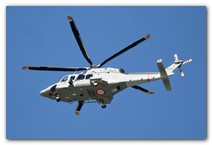 (known locally as Ta’Qali), RAF Kalafrana,
RAF Luqa, plus a dispersal at Safi.
(known locally as Ta’Qali), RAF Kalafrana,
RAF Luqa, plus a dispersal at Safi.
Currently,
the only airport remaining on Malta is the main International Airport at Luqa,
also the home of the Armed Forces of Malta.
The
old RAF airfield of Ta’Qali was located in the
centre of Malta, and was used by the RAF until the 1950’s. Ta’Qali
itself (pronounced Ta’Ali, because the “Q” in
Maltese is usually silent) is now the location of the National Stadium, and also
is home the Malta Aviation Museum. A visit was arranged here in March 2015, and
our host was the affable and knowledgeable Ray Polidano who had agreed to show
us round. The museum is located just to the south of the National Stadium, and
is extremely well signposted and easy to find by car. Public transport (buses)
is a very popular way round on the island, and there is a nearby bus stop.
Today’s Malta Aviation Museum is housed in a number of buildings. There a couple
of Nissen huts, which include the museum entrance, many displays of aircraft,
models, artefacts and  pictures etc, as well as some
storage and restoration areas. Between the two Nissen huts is an outside storage
area containing a number of aircraft and other items.
There is a large central hangar that contains the majority of the aircraft on
display, and an additional “Air Battle of Malta Memorial Hangar” has been
constructed next to this. After going through the visitor’s entrance, the
first aircraft on display is a de Havilland Vampire T11 (WZ550) in the markings
of Hal Far based 750 NAS, representing a Fleet Air Arm Sea Vampire T22. Behind
this is a Hawker Sea Hawk
pictures etc, as well as some
storage and restoration areas. Between the two Nissen huts is an outside storage
area containing a number of aircraft and other items.
There is a large central hangar that contains the majority of the aircraft on
display, and an additional “Air Battle of Malta Memorial Hangar” has been
constructed next to this. After going through the visitor’s entrance, the
first aircraft on display is a de Havilland Vampire T11 (WZ550) in the markings
of Hal Far based 750 NAS, representing a Fleet Air Arm Sea Vampire T22. Behind
this is a Hawker Sea Hawk FGA6 (WV826), with Suez stripes, wearing the markings
of 804 NAS. Behind this display area is a small restoration workshop, where a
couple of Westland Sioux helicopters were stored. The rear area of the adjacent
Nissen hut contains a storage area where many of the recovered aircraft parts
are kept. Ju-87, Ju-88, Swordfish, Martinet, SM-79, He-115 to name but a few.
Also here is the disassembled de Havilland Sea Venom FAW22 (XG691), which
operated from Hal Far with 750 NAS. The rest of this Nissen hut is a substantial
storage and workshop area which houses, amongst other things, a DC-3, Meteor,
Bell 204, Beech 45 and Westland Dragonfly, all waiting their turn in the
restoration process. In addition, a recovered and valued Spitfire Frame 19 with
identity is also stored here, just in case!
FGA6 (WV826), with Suez stripes, wearing the markings
of 804 NAS. Behind this display area is a small restoration workshop, where a
couple of Westland Sioux helicopters were stored. The rear area of the adjacent
Nissen hut contains a storage area where many of the recovered aircraft parts
are kept. Ju-87, Ju-88, Swordfish, Martinet, SM-79, He-115 to name but a few.
Also here is the disassembled de Havilland Sea Venom FAW22 (XG691), which
operated from Hal Far with 750 NAS. The rest of this Nissen hut is a substantial
storage and workshop area which houses, amongst other things, a DC-3, Meteor,
Bell 204, Beech 45 and Westland Dragonfly, all waiting their turn in the
restoration process. In addition, a recovered and valued Spitfire Frame 19 with
identity is also stored here, just in case!
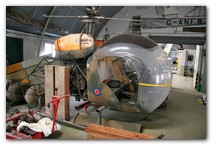

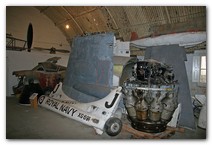
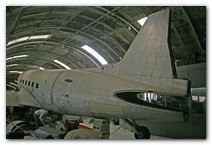

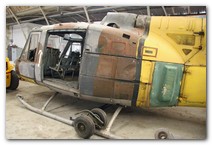
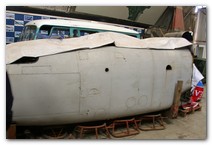
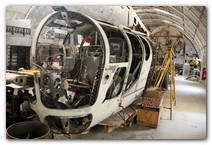
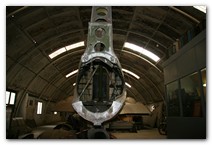
The
main display hangar is quite a substantial building, with plenty of space in to
house even very large aircraft. At the centre is a Douglas DC-3, and spread
throughout the hangar are aircraft with various historic associations with
Malta.
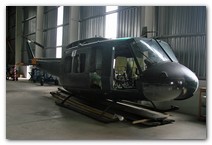
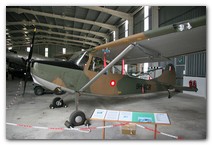
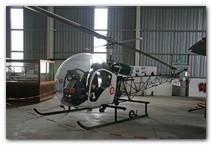


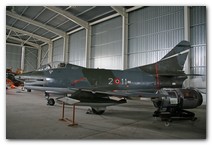
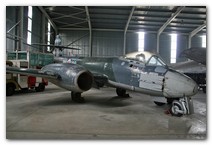
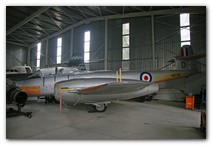
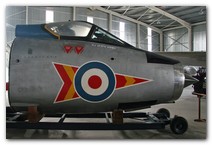
The
outside storage area near the Nissen huts holds some larger artefacts that
don’t fit inside the workshops, including two HP Hastings nose sections,
recovered from a Maltese scrap yard.
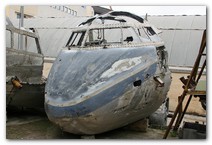
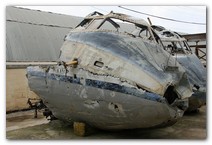
The
final exhibition area is the recently constructed Air Battle of Malta Memorial Hangar which proudly houses their
fantastically refurbished Spitfire and Hurricane, as well as the recently
restored Tiger Moth. Also in here is a recovered Fairey
Swordfish, as well as a Piper Grasshopper that is being restored.
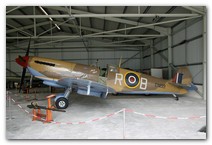
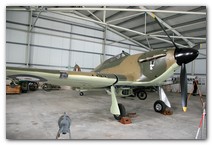


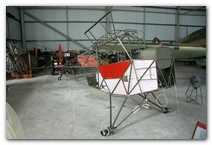
Our
thanks to Ray Polidano for taking the time to answer our questions and guide us
through the museum.
An
up-to-date list of Museum residents is available on EuroDemobbed
Museum
contact e-mail address is info@maltaaviationmuseum.com
Museum
website URL is www.maltaaviationmuseum.com
 Malta
has a very historic connection with military aircraft. The island’s
geographical location in the middle of the Mediterranean Sea, situated between
Italy and the North African coast meant that it has always been an important
place throughout history.
Malta
has a very historic connection with military aircraft. The island’s
geographical location in the middle of the Mediterranean Sea, situated between
Italy and the North African coast meant that it has always been an important
place throughout history.


























